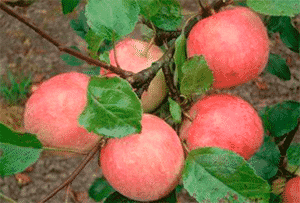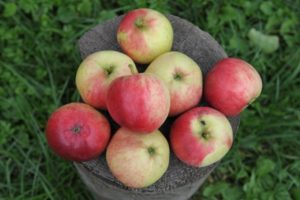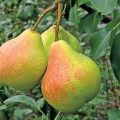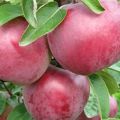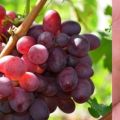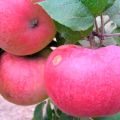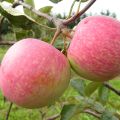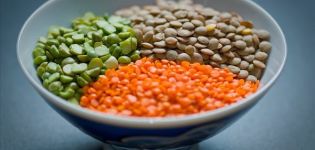Description of the apple variety Pamyat Syubarova and recommended growing regions
The horticultural market today presents a wide variety of apple varieties, among which certain types of fruit trees traditionally occupy the leading positions. These include the type of apple Pamyat Syubarova, therefore, experienced gardeners advise paying attention to it and studying the features of a unique plant, recommendations on the most favorable growing regions.
Description of the variety and features
The Apple tree in Memory of Syubarova appeared as a result of the work of Belarusian breeders who conducted experiments on crossing two fruit species - Seruel, Belarusian Sinap. The result of many years of work has been the emergence of a winter apple variety with decent taste and ability to long-term storage.

Pros and cons of the variety
The undoubted advantages of the apple variety include a high degree of resistance to difficult growing conditions, including those associated with the climatic features of the regions. The advantages of a fruit tree include the following points:
- regularity and stability of fruiting;
- long shelf life;
- resistance of leaves and fruits to scab;
- ability to withstand low temperatures;
- special taste characteristics.

Apples of the Memory Syubarova variety must be removed from the tree on time. With a delay, darkening of the pulp in the heart area may be observed, which negatively affects the taste of the fruits and the quality of their storage.
Specifications
The apple tree in Memory of Syubarova belongs to the late-ripening species, the fruits are used for long-term storage and fresh consumption during the period of insufficient fresh fruit... Subject to proper conditions, fruits are able to maintain their taste and appearance until May. The apples are medium-sized, the predominant color is a light green palette with a blurred striped blush. The fruits of this variety are distinguished by their white juicy pulp and dense structure.
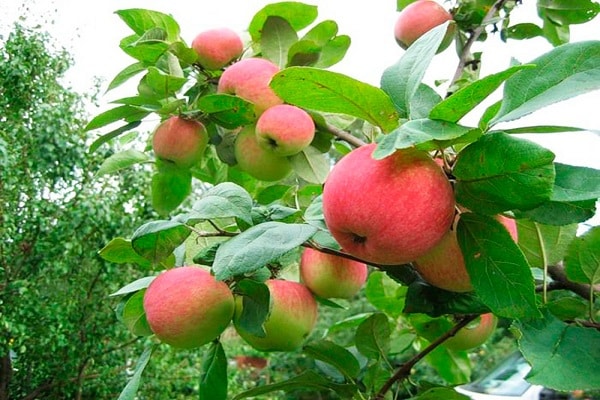
Tree structure, annual growth
The apple variety is medium-sized. The tree forms a round, compact crown with an average degree of thickening. The leaf plates do not differ in large size, have an elongated shape with a slight sharpness at the end.
The tree has straight, brown shoots. In the autumn, pruning of damaged branches with signs of disease is carried out. In the spring, it is required to form a crown by cutting the crown at a height of 80 cm.The distance between the lateral branches is not less than 50 cm. The cut ends should give lateral branches, which promotes plant rejuvenation and improves bud formation.
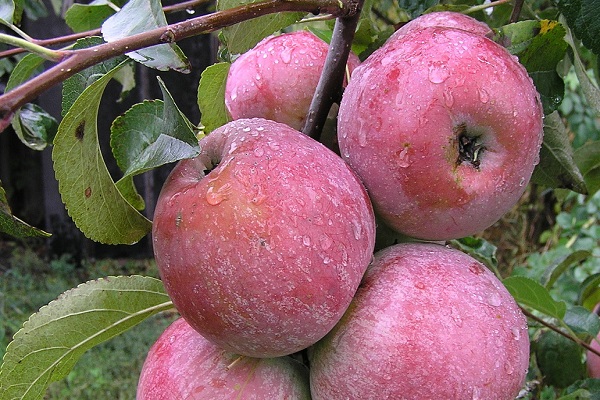
The frequency of fruiting
The apple tree is grown on seed and dwarf rootstock. The time of the beginning of the yield depends on the chosen method. In the first option, the first fruits are obtained in 5-6 years, in the second, the period is shorter and is 2-3 years. The crop is formed according to a mixed scheme, which allows constant fruiting.
Yield
The average size of the fruit reaches an average weight of 135 to 140 g. When testing the variety and identifying the characteristics of its fruiting, the average yield was 190 c / ha.

Tasting assessment
The late winter apple reaches its proper taste by the beginning of the winter season. In this regard, the fruits are laid for storage and taken out for consumption in early January, and they can be used for this purpose until June.
Reviews note a dense, juicy biting structure and a weak aroma. On a scale of 5 points, a pleasant sweet and sour flavor is rated as 4.6. 100 g of the product contains 10 mg of ascorbic acid, sugar is 9.5%.

Winter hardiness
The winter hardiness of the apple tree is assessed as high. Trees are able to withstand low temperatures for a long time. Only young, poorly rooted shoots are exposed to freezing. In the presence of frost damage, sanitary pruning of branches is carried out, which contributes to the rapid recovery of the apple tree.
Disease resistance
When breeding the variety, Belarusian scientists set the task of developing a tree that is resistant to fungal diseases. Good tolerance of this type of disease is inherent in the apple tree at the genetic level, therefore it retains the presentation of the fruit well even with the appearance of a fungal infection.
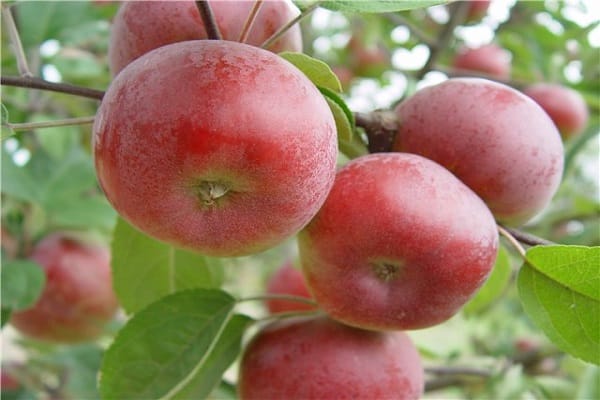
The most favorable regions for growing
Initially, the variety was bred for cultivation in the territory of Belarus. Since 2002, they began to plant it everywhere in the territory of Russian regions. Successful results have been reported in the following regions:

- Central;
- Northwest;
- Volgo-Vyatsky.
The qualities of resistance and good adaptation of the variety to growing conditions give specialists the opportunity to count on good yield results in other Russian regions as well.

